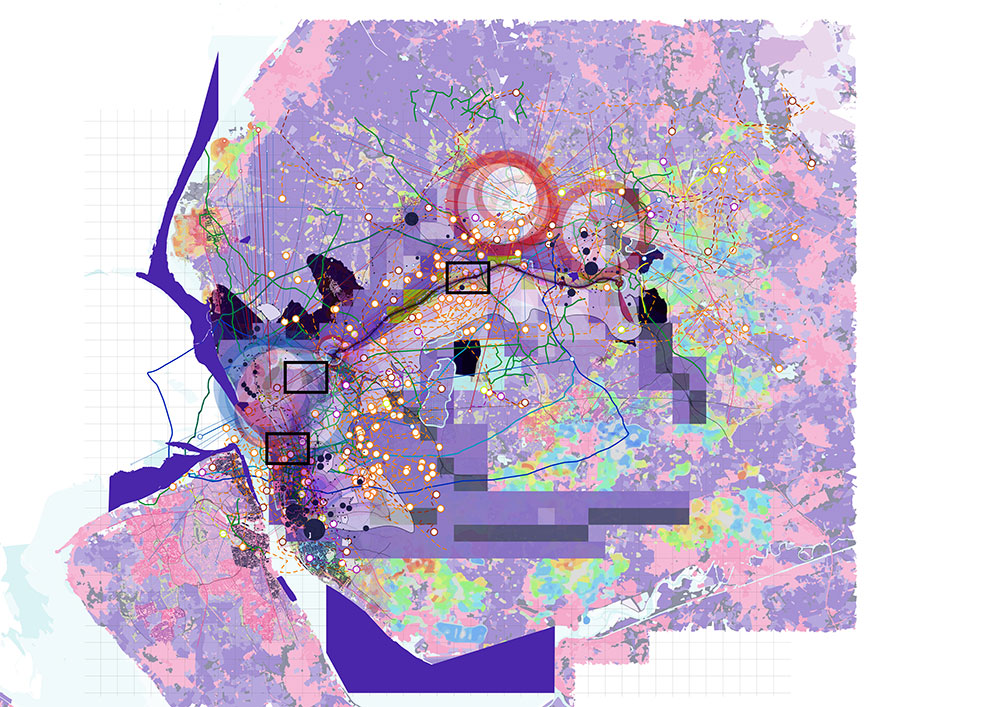Infrastructure Space uses large territories and novel mapping techniques to explore them, to reveal latent environmental, social and cultural conditions. We approach space with neutrality to form objective views of the ways in which space is produced and used. Expanding on theories of landscape urbanism, we recognise that it is difficult to separate urban scale from global scale. Thus, infrastructure as a methodological lens enables critical discourse that addresses global issues of exchange, mobility and justice. This year the territory under investigation was the M58 motorway corridor that connects the M6 with the docks at Liverpool. We asked all of our students to consider the following:
COMMONS. By this we mean a shared space that enables a citizen led agency, sometimes to fill what has been referred to as an ‘infrastructural gap’.
ECO-SYSTEMS. We deliberately hyphenate this term to accentuate its constituency - ecological / systems - we are interested in systems that can enable ecological diversity and sustainability.
SOCIETY. Society has manifold interpretations. Here we refer to groups of people with common values, territory and cultural expectations and the positive effects of such arrangements.
MArch2 developed research questions based on preliminary group studies that considered digital connectivity, urban-rural dynamics, planning policy and complexity, flooding and water scarcity, density and dispersion, and infrastructural economies. Thesis projects typically explored conditions such as these and then speculated on the potential spatial and material outcomes. Schemes for floating cities, motorway heritage, networked cities, future farming, reforestation, digital distribution hubs, agglomerated urbanism and new rural states, have examined the possibilities and potentials enabled by technology and policy and are responsive to pending environmental collapse.


